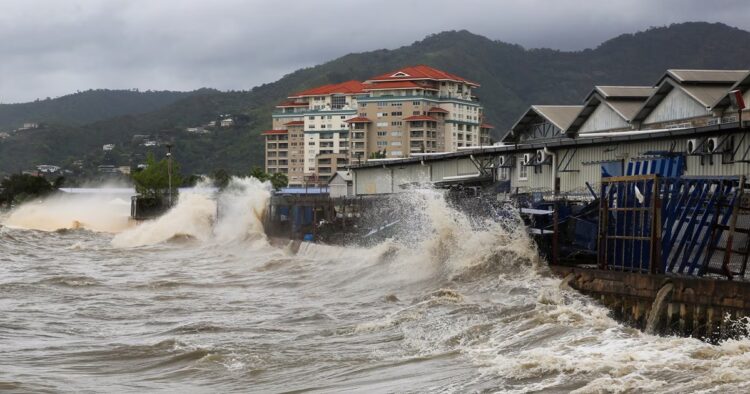Hurricane Beryl became a powerful Category 4 storm on Monday, moving across the southeastern Caribbean. It brought strong winds and heavy rain, causing power outages and flooding in several Caribbean islands.
The US National Hurricane Center (NHC) reported Beryl’s winds reaching up to 155 mph (250 kmh), making it the earliest Category 4 storm on record.
Beryl is expected to bring 3-6 inches (8-15 cm) of rain to Barbados and the Windward Islands on Monday night, with some areas potentially receiving up to 10 inches, particularly in the Grenadines and Grenada.
The storm is moving west-northwest at a speed of 21 mph and is expected to pass near Jamaica on Wednesday. Jamaica has issued a hurricane warning, and tropical storm warnings are in place for parts of the southern coasts of the Dominican Republic and Haiti.
Residents in the eastern Caribbean have been preparing for Beryl by boarding up windows, stocking up on food, and filling their cars with fuel. In Barbados, vehicles were seen driving through flooded streets in Bridgetown.
In St. Vincent, there were reports of roofs being torn off buildings and widespread power outages. Grenada also experienced island-wide power cuts. In Jamaica, some residents, like waiter Welton Anderson, remained calm, though they anticipated panic would set in closer to the storm’s arrival.
Mexico is also preparing for Beryl’s potential impact later this week. The federal government has urged authorities and residents to exercise extreme caution. Mexico is already dealing with the aftermath of heavy rains from former tropical storm Chris, which caused damage in the states of Oaxaca and Veracruz.
Officials are concerned about the possibility of additional flooding due to already saturated river basins.
Beryl’s rapid intensification and early arrival have been linked to climate change. Scientists believe that global warming has contributed to record-high temperatures in the North Atlantic, providing more fuel for intense hurricanes. Atmospheric scientist Christopher Rozoff from the US National Center for Atmospheric Research stated that climate change increases the likelihood of more powerful hurricanes.
ALSO READ: “Kenya Protests: 39 Killed, 360+ Injured Over New Tax Hikes; Hundreds Arrested”
Meteorologist Andra Garner noted that Beryl’s quick jump from a Category 1 to a Category 4 storm in less than 10 hours is an example of how climate change is influencing storm behavior. Her research indicates that rising water temperatures over the past five decades have made it more than twice as likely for storms to rapidly intensify.
Curtis Douglas, President of the All Tobago Fisherfolk Association, reported that the eastern side of Tobago was significantly impacted, but fishermen received enough warning to remove their boats from the water.
Limited damage to hotel properties has been reported on the island. The US National Oceanic and Atmospheric Administration had predicted above-normal hurricane activity for the Atlantic this year, citing unseasonably high ocean temperatures as a contributing factor.
















Comments